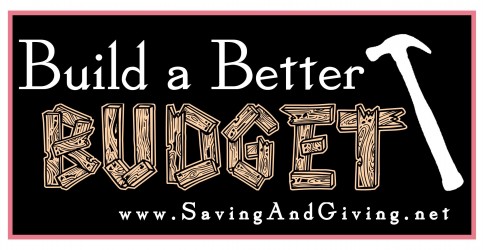
Confession time…. We didn’t have a budget until a few months ago. Well, I had a mental budget. As in me trying to remember about how much each category should be allotted and sort of trying to stay within a reasonable amount at the grocery store. I had some spending goals, but not an offical budget. Even though I was careful about how much I spent at the grocery store (and doing other shopping), it seemed like our money just disappeared into thin air. Let me explain….
We have a variable income. There’s a base amount that we can depend on, but we usually earn money above and beyond that base amount every two weeks. Sometimes it’s just a little extra, and other times it’s a large chunk. But it seemed like, no matter the size of the checks, we would look at our checkbook balance a week later and wonder where it all went. It just disappeared!
The problem was that we weren’t telling our money what to do. We were spending a little bit here and a little bit there, and that extra money was dripping out a little at a time until the bucket was empty.
My big AH-HAH moment came when I looked at the bottom line on our taxes. I knew about how much we should need to live on, and the number staring back at me was TWICE that amount! What in the world happened to the rest of it!?
Now before you think that I’ve been buying loads of new clothes, shoes, and purses, let me tell you that we do have a few large purchases to show for some of that money. We paid cash for two used vehicles, put in a new furnace and air conditioning unit, paid our daughter’s school tution, and did some other home repairs. But those large expenses certainly didn’t add up to the amount I saw.
Enter Financial Peace University.
We started our FPU class a few months ago, and one of the very first assignments we had was to create a monthly budget. And – get this – it had to be on paper, not in my head! It took us a little while to figure out exactly how much to place in each spending category, but we came up with a workable plan without killing each other. Since we have a somewhat irregular income, we budgeted on the base amount that we know we can depend on. That covered our basic expenses (utilities, food, gas, etc.). We started a second list to start thinking about what we wanted to do with the extra income. We wanted to be prepared for it and NOT let it slip away because we weren’t paying attention.
I could not believe how much money we were wasting! I also can’t believe how many things from our extra money to-do list are currently being accomplished. This alone has proven to me that taking the time to create a budget is time well-spent. Now, instead of wondering where our money is going, we know. We’ve told it where to go. We’ve put it to work. We have something to show for it. We’ve plugged the leak with our budget.
Please join me as we journey through some steps to help us all Build a Better Budget. If you have budgeting stories to share, please leave a comment. If you’re a blogger, you can even write a post about why you budget – or why you haven’t started yet – and link it up below. You can even grab the Build a Better Budget image if you’d like to use it. It helps when we all share our experiences and realize that we’re not in this alone!
Want to make sure that you don’t miss any of the Build a Better Budget series? You might want to subscribe to my FREE email updates or subscribe to the RSS feed.

Hi there! I am dropping in from Frugal Friday.
I enjoyed your post. I am looking forward to checking out the rest of the series. I confess I do not use a real budget. It is in my head. Sort of.
Stop by and see me when you get a chance over at Free 2 Be Frugal.
🙂
Oh, Niki! I totally understand the in-my-head budget. We lived with one for many years. I’m glad you stopped by. I’ll be sharing our story of how we went from in-my-head to on-paper and the difference it’s made.